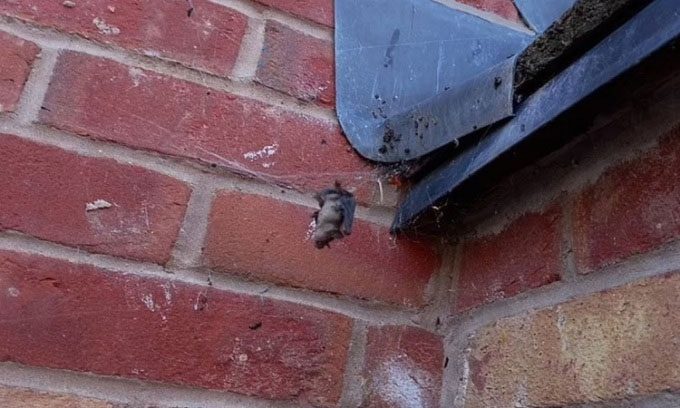For the first time, researchers have documented false widow spiders capturing and consuming large numbers of bats in Shropshire.

A bat caught in a spider web. (Photo: NUI)
The false widow spider (Steatoda nobilis) is an invasive species that causes severe symptoms for those bitten. Over two consecutive days in July 2021, researchers discovered live bats in the attic of a house in northern Shropshire caught in a spider web beneath the entrance to a chicken coop. The first victim was a juvenile bat that had died and was completely immobilized, with its limbs tightly bound to its body by spider silk. The bat’s body was slightly wrinkled and discolored due to being consumed by the spider. A second, much larger adult bat was also caught in the spider web but was still alive. The research team freed it from the web and released it.
It is likely that the false widow spider cannot consume an entire bat at once; instead, it saves parts to eat gradually. Scientists indicate that this is the first time a member of the Theridiidae spider family has preyed on bats and the first instance of the false widow spider consuming a mammal.
The research team, led by Ben Waddams, a wildlife reporter, detailed the findings in the journal Ecosphere on February 21. “The false widow spider, similar to its close relative the black widow spider, possesses a unique hunting technique and a very potent venom,” shared Aiste Vitkauskaite, a researcher at the National University of Ireland, Galway. “This enables them to easily capture much larger vertebrates.”
The false widow spider has venom that contains fast-acting neurotoxins very similar to those of the black widow spider, which can cause paralysis of skeletal muscles in terrestrial vertebrates, allowing them to occasionally prey on small mammals and reptiles. Originating from the Madeira and Canary Islands, the false widow spider has the potential to become one of the most formidable invasive spider species in the world. It was first recorded in southern England in 1879. This species has expanded its range and population density in recent decades, spreading north to Scotland and west through Wales and Ireland.





















































